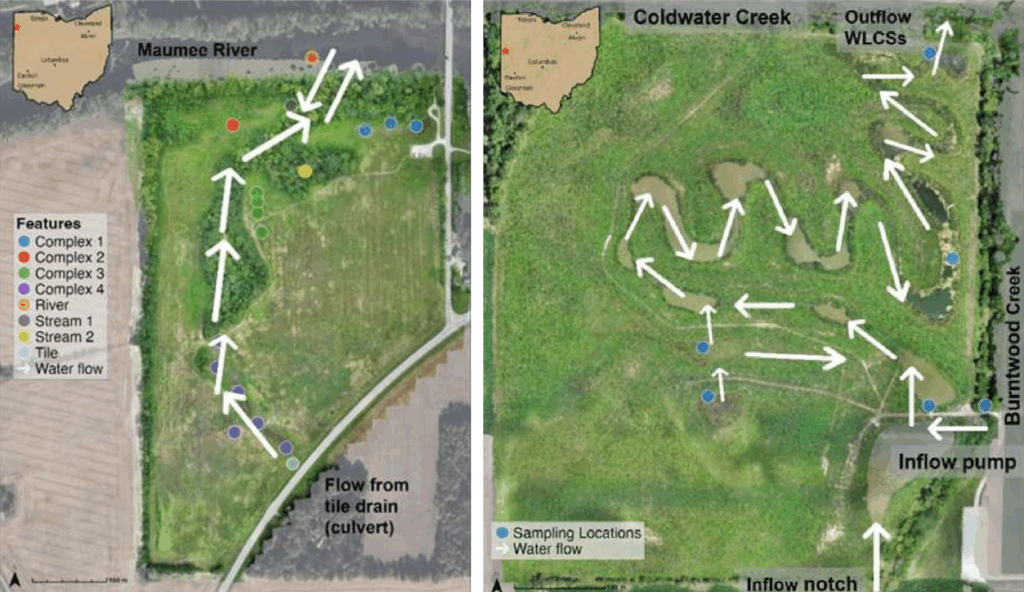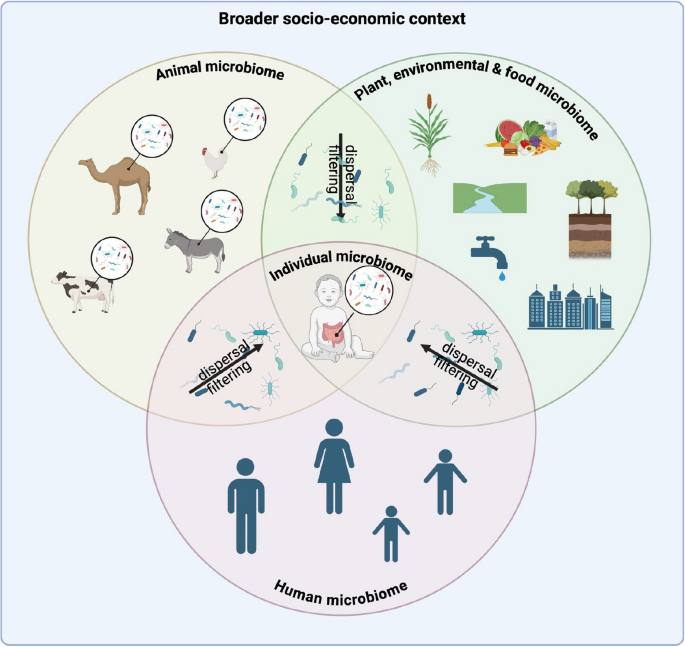Climate Change Impact on Amazonian Avifauna: A Threat to Sustainable Development Goals
A report published in Science Advances details the severe impact of rising temperatures on bird populations in pristine Amazonian rainforest, presenting a significant challenge to the achievement of the United Nations Sustainable Development Goals (SDGs), particularly SDG 13 (Climate Action) and SDG 15 (Life on Land). The study indicates that even minor climatic shifts have profound consequences for biodiversity in ecosystems with minimal direct human interference.
Research Overview and Core Findings
Study Methodology
The conclusions are derived from a long-term study conducted within the Biological Dynamics of Forest Fragments Project (PDBFF), a federal conservation unit managed through a partnership between Brazil’s National Institute of Amazonian Research (INPA) and the Smithsonian Institute, USA, exemplifying SDG 17 (Partnerships for the Goals).
- Location: 3,180 hectares of preserved forest, 80 kilometers north of Manaus, Brazil.
- Data Period: 1985 to 2012.
- Sample: Capture and recapture data from 4,264 specimens across 29 understory bird species.
- Technique: Statistical modeling was used to link bird survival rates with temperature and rainfall data from the dry season (May to October).
Principal Results
The research quantifies the direct ecological cost of climate change, providing critical data for assessing progress on SDG 13.
- A 1 degree Celsius increase in average dry-season temperature was correlated with a 63% reduction in the apparent annual survival rate of the understory bird community.
- Temperature variation was the dominant factor, explaining approximately 85% of the fluctuation in bird survival rates.
- The impact of reduced rainfall was less pronounced, with a 10-millimeter decrease in precipitation associated with a 14% reduction in the apparent survival rate.
Implications for United Nations Sustainable Development Goals (SDGs)
Direct Challenge to SDG 13: Climate Action
The study provides empirical evidence that failure to take urgent action to combat climate change, as mandated by SDG 13, results in tangible and severe ecological damage. The dramatic decline in bird survival from a minor temperature increase highlights the vulnerability of even remote ecosystems and underscores the necessity of limiting global temperature rise.
Severe Threat to SDG 15: Life on Land
The findings document a significant threat to terrestrial biodiversity, a core concern of SDG 15 (Life on Land). The decline of 24 of the 29 species studied signals a systemic risk to the Amazonian ecosystem’s integrity and a failure to meet targets related to halting biodiversity loss.
Vulnerable Species Identified
The research identified several species as particularly vulnerable to the observed warming, including:
- Olive-backed foliage-gleaner (Automolus infuscatus)
- Spot-throated woodcreeper (Certhiasomus stictolaemus)
- Amazonian plain xenops (Xenops minutus)
- Rufous-throated antbird (Gymnopithys rufigula)
Expert Analysis and Recommendations for SDG Alignment
Conservation Strategies Aligned with SDG 15
Expert analysis of the study’s results suggests several key strategies to mitigate biodiversity loss and support the objectives of SDG 15.
- Preserve Large Intact Forests: Maintaining large, contiguous areas of primary forest is essential for ensuring species viability and ecological resilience.
- Protect Microclimate Refuges: Lower-lying forest areas, such as those along streams, provide critical cooler habitats that can act as refuges for birds and other wildlife amid rising temperatures.
- Integrate Climate and Forest Policy: Recognizing that climate change is partly driven by deforestation, policies must combine forest restoration and an end to deforestation to reestablish climatic stability and preserve biodiversity, thereby addressing SDG 13 and SDG 15 concurrently.
Avenues for Future Research
Further research is needed to inform effective policy and action. It is suggested that the situation in fragmented or deforested areas is likely far worse. Future studies should investigate whether hereditary factors could confer resilience to some individuals, potentially offering insights for targeted conservation efforts.
Analysis of Sustainable Development Goals in the Article
1. Which SDGs are addressed or connected to the issues highlighted in the article?
The article primarily addresses issues related to two Sustainable Development Goals:
- SDG 13: Climate Action – The core of the article discusses the direct impact of climate change, specifically the “increase of 1 degree Celsius (ºC) in average temperature,” on a natural ecosystem. It links this temperature rise to a dramatic decline in bird survival, highlighting the urgent need to combat climate change and its impacts.
- SDG 15: Life on Land – The article is fundamentally about the conservation of terrestrial ecosystems and biodiversity. It details the threat to 29 bird species in the Amazon understory, a key component of “Life on Land.” The discussion on the importance of “preserving large areas of intact forest” and the need to “restore the forest and stop cutting it down” directly connects to the goals of protecting, restoring, and promoting the sustainable use of terrestrial ecosystems and halting biodiversity loss.
2. What specific targets under those SDGs can be identified based on the article’s content?
Based on the article’s content, the following specific SDG targets can be identified:
-
SDG 13: Climate Action
- Target 13.1: Strengthen resilience and adaptive capacity to climate-related hazards and natural disasters in all countries. The article demonstrates a lack of resilience in the Amazonian bird populations to climate-related hazards like rising temperatures, as their survival rate dropped by 63%. The discussion about creating “refuge niches” in cooler, lower-lying areas relates to building adaptive capacity within the ecosystem.
-
SDG 15: Life on Land
- Target 15.2: By 2020, promote the implementation of sustainable management of all types of forests, halt deforestation, restore degraded forests and substantially increase afforestation and reforestation globally. The article strongly supports this target through the expert opinion of Mario Cohn-Haft, who states, “We need to restore the forest and stop cutting it down. This will help reestablish the climate and preserve the conditions necessary for maintaining biodiversity.”
- Target 15.5: Take urgent and significant action to reduce the degradation of natural habitats, halt the loss of biodiversity and, by 2020, protect and prevent the extinction of threatened species. The study’s central finding—that rising temperatures have a “very dramatic impact on the survival of practically all the birds that we analyzed”—directly addresses the urgent need to halt biodiversity loss. The identification of vulnerable species like the olive-backed foliage-gleaner and the rufous-throated antbird underscores the threat of extinction.
3. Are there any indicators mentioned or implied in the article that can be used to measure progress towards the identified targets?
Yes, the article mentions and implies several indicators that can be used to measure progress:
- Indicator for SDG 13 (Climate Action): The article explicitly uses “an increase of 1 degree Celsius (ºC) in average temperature during the dry season” as a key variable. Therefore, monitoring the change in average temperature in sensitive ecosystems like the Amazon is a direct indicator of climate change’s impact. A reduction in the rate of temperature increase would signify progress.
- Indicator for SDG 15 (Life on Land): The study’s primary metric, the “apparent survival rate of birds,” serves as a powerful indicator for biodiversity health (Target 15.5). The article states this rate was “reduced by almost two-thirds” or 63%. Tracking this survival rate over time would measure the success of conservation efforts. An increase or stabilization of this rate would indicate positive progress.
- Implied Indicator for SDG 15 (Life on Land): The article implies the importance of forest cover as an indicator for Target 15.2. Experts emphasize “preserving large areas of intact forest” and warn about the worse situation in “deforested or fragmented areas.” Therefore, the extent of intact forest versus deforested or fragmented areas is a crucial implied indicator for measuring progress in forest conservation and restoration.
4. Table of SDGs, Targets, and Indicators
| SDGs | Targets | Indicators Identified in the Article |
|---|---|---|
| SDG 13: Climate Action | 13.1: Strengthen resilience and adaptive capacity to climate-related hazards. | Change in average temperature during the dry season (the article notes a 1°C increase). |
| SDG 15: Life on Land | 15.5: Take urgent action to halt the loss of biodiversity and prevent the extinction of threatened species. | Apparent survival rate of bird species (the article notes a 63% reduction). |
| 15.2: Promote sustainable management of forests, halt deforestation, and restore degraded forests. | Extent of intact forest vs. deforested or fragmented areas (implied by the call to “restore the forest and stop cutting it down”). |
Source: revistapesquisa.fapesp.br






